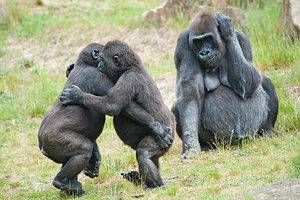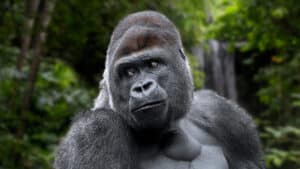We’re fascinated by gorillas, in part because of how similar they are to us. But just how much do you think you know about these fascinating primates? In this post, we uncover 10 incredible gorilla facts!
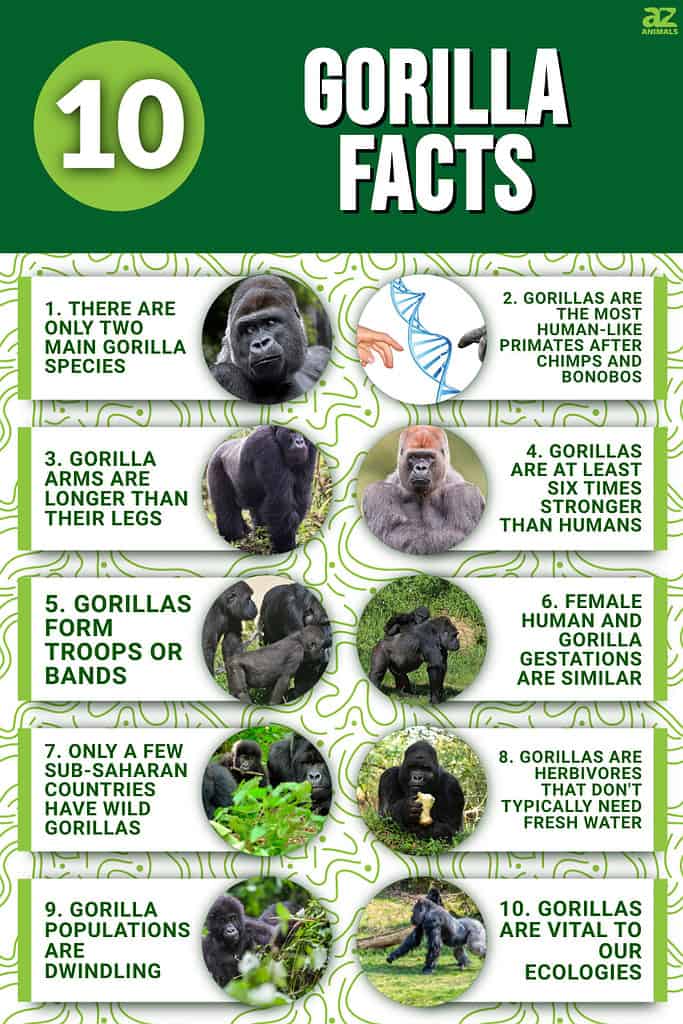
1. There Are Only Two Main Gorilla Species
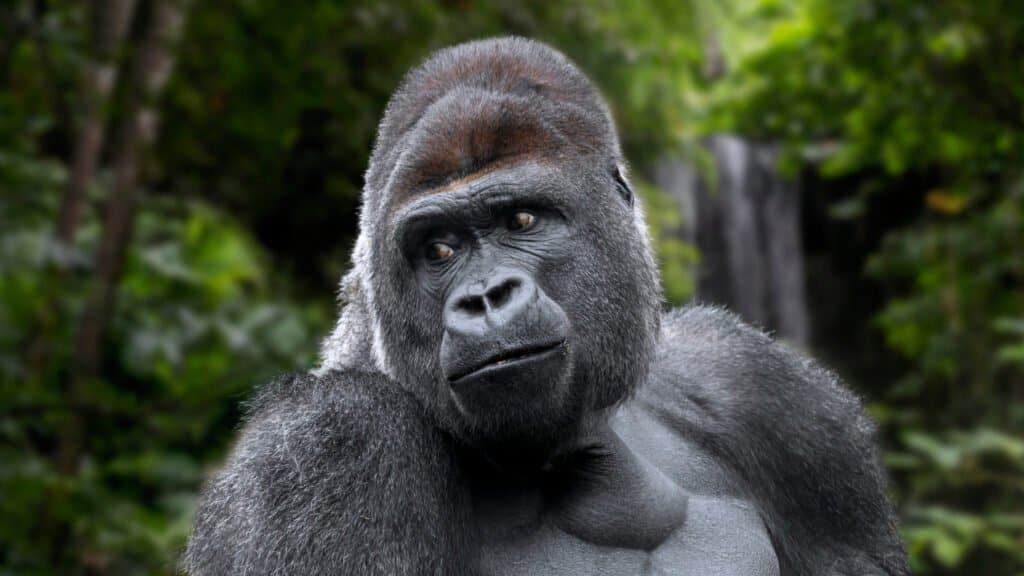
Eastern gorillas and western gorillas are the two primary types of gorillas.
©Philippe Clement/Shutterstock.com
There are two primary types of gorillas: eastern and western. Gorillas can be broken down into four separate groups. The western lowland gorilla and the Cross River gorilla are two species found in the west. Other subspecies include the eastern lowland gorilla (Gorilla beringei bakiga) and the mountain gorilla (Gorilla beringei beringei). Eastern gorillas are darker than their western counterparts.
2. Gorillas Are the Most Human-Like Primates After Chimps and Bonobos

Humans and gorillas are very similar in genetics.
©David Carillet/Shutterstock.com
Surprisingly, human and gorilla genes are extremely similar. Gorillas have a high IQ and can communicate their feelings through behaviors such as laughing and crying. These primates can create and use their own rudimentary tools. They even have fingerprints!
3. Gorilla Arms Are Longer Than Their Legs
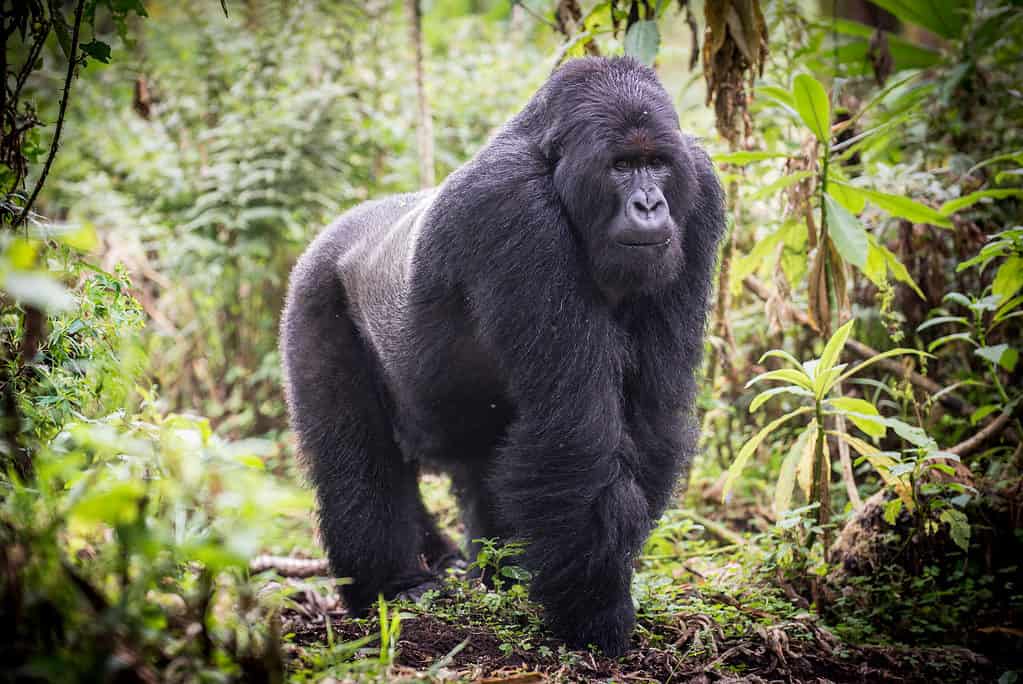
Gorillas have long arms that allow them to walk on all fours.
©Jurgen Vogt/Shutterstock.com
Because of the length of their arms, gorillas are better able to walk on all fours. They do everything with the tips of their fingers and knuckles. They are capable of walking on two legs for about 10 feet. Gorillas’ arm span is roughly one foot longer than that of an adult male human. Though modern gorillas spend most of their time on the ground, their lengthy forearms hint at a past life in the trees (ground-dwelling).
4. Gorillas Are At Least Six Times Stronger Than Humans
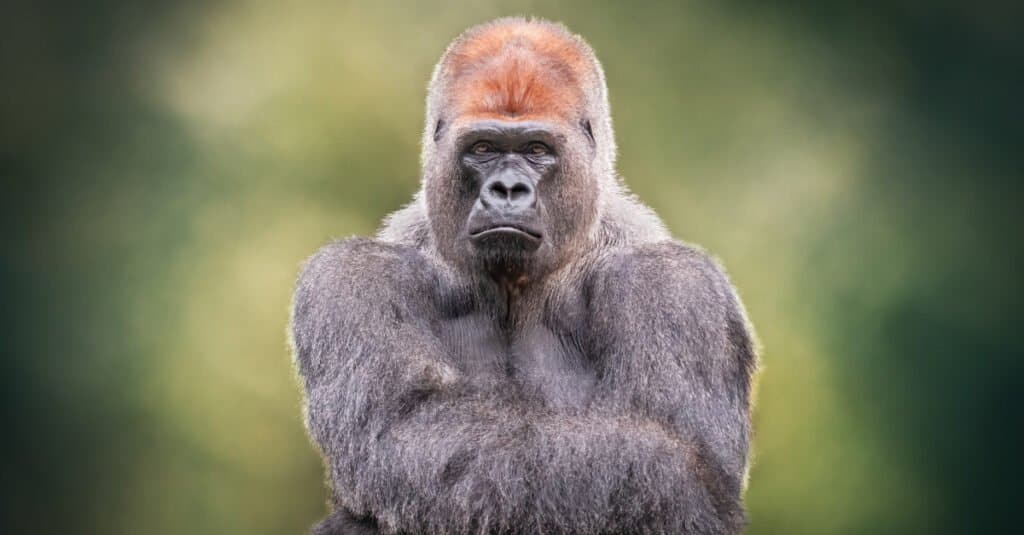
Gorillas have massive upper-body strength.
©iStock.com/SooniosPro
Specifically, gorillas are renowned for their incredible upper-body strength. The strength of a gorilla is six times that of a human. Gorillas carry and propel their massive bodies with the help of their arms, chests, and backs. The size of a gorilla’s body contributes much to the animal’s strength. The usual weight of a male wild gorilla is between 300 and 500 pounds, whereas a female gorilla weighs 150 to 250 lbs.
5. Gorillas Form Troops or Bands
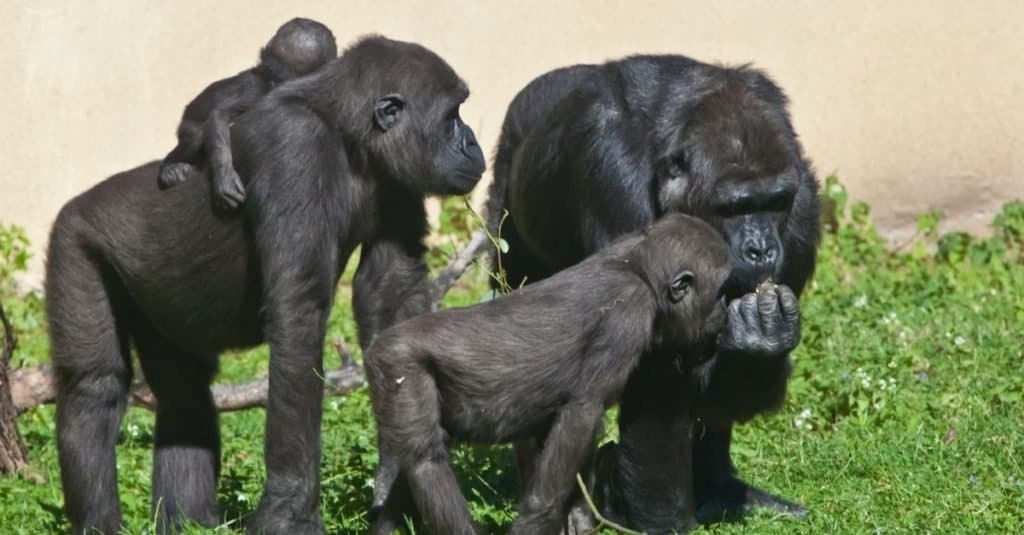
Gorillas form groups called troops or bands.
©Mikhail Semenov/Shutterstock.com
Two adults constitute a gorilla family, but groups of up to 50 individuals have been documented. Larger gorilla groups are called bands or troops. Older males, known as silverbacks, are the dominant figures in gorilla bands. These guardians choose when the “squad” stops for meals, breaks, and moves.
Silverbacks have a dominant and aggressive nature that is typically only revealed when they feel threatened (they beat their chests). Otherwise, even these dominant figures are generally considered peaceful primates.
6. Female Human and Gorilla Gestations Are Similar
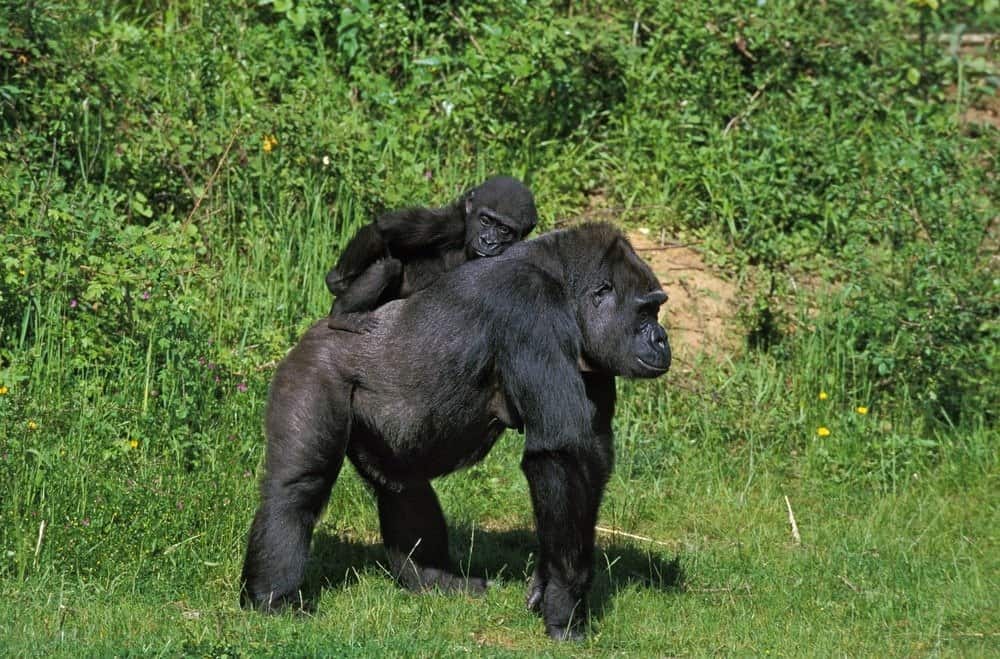
A mature female will have one baby every few years.
©slowmotiongli/Shutterstock.com
Female gorillas gestate for 8.5 months. A mother normally has one live infant, like other primates and humans. Rarely do twins occur. Most newborn gorillas weigh four pounds. A mature female will have one baby every few years and three to four in total in her lifetime.
7. Only A Few Sub-Saharan Countries Have Wild Gorillas
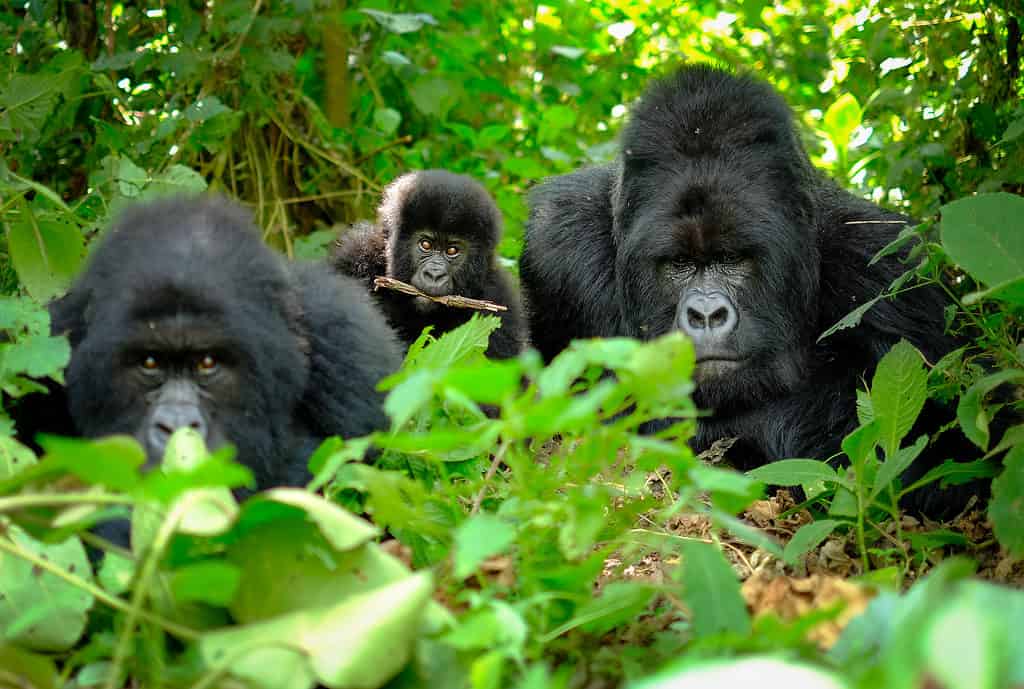
Mountain gorillas live in Uganda’s Virunga Mountains.
©Marian Galovic/Shutterstock.com
Gorillas are forest-dwelling, ground-dwelling creatures. They thrive in humid lowland tropical rainforests and frigid highland woods. Mountain gorillas live in the DRC, Rwanda, and Uganda’s Virunga Mountains or Bwindi Impenetrable National Park.
The eastern gorilla habitat reaches 13,000 feet above sea level, while the western gorilla habitat is about half that high. Most gorillas are western lowland gorillas. Cameroon, Nigeria, Central African Republic, Republic of Congo, DRC, Equatorial Guinea, Gabon, and Angola are home to them.
8. Gorillas Are Herbivores That Don’t Typically Need Fresh Water
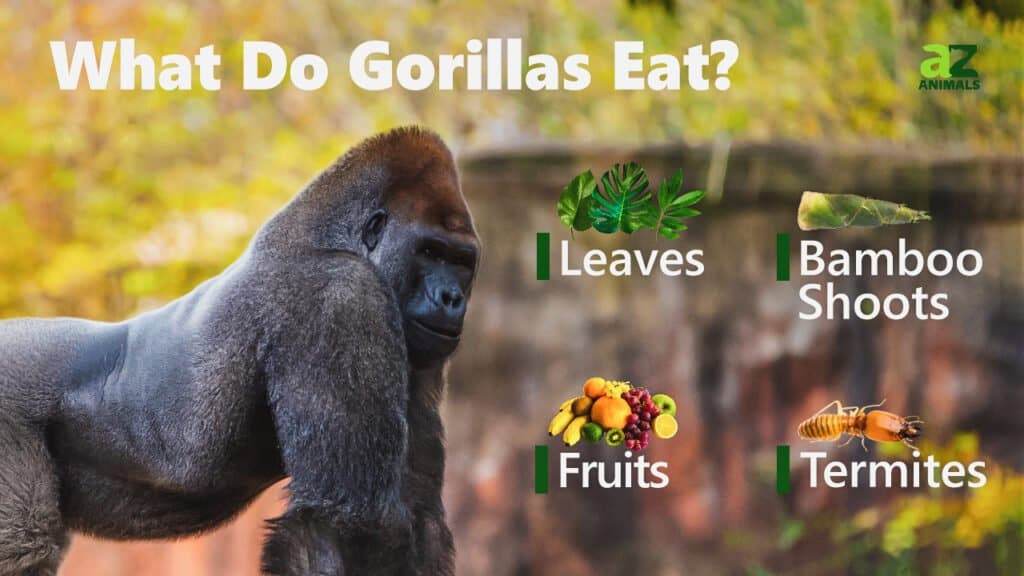
Gorillas are herbivores, eating wild celery, bamboo, roots, fruits, bark, branches, and tree pulp. They’ll ingest soil and ash to promote digestion. They also consume small animals and insects; however, they’re not hunters.
An adult male gorilla can eat 40 pounds of vegetation daily, or 10% of its body weight. That’s 80 broccoli heads a day! Gorillas rarely need fresh water to hydrate. Their meals and early dew provide enough hydration.
9. Gorilla Populations Are Dwindling

Eastern lowland gorillas now occupy only 13% of their historical range.
©Katja Tsvetkova/Shutterstock.com
Africa’s gorilla population is declining for many reasons. Some are poached for “bush meat” in war-torn areas. Logging, mining, and agriculture are destroying gorilla habitats, leading to increased human conflict. In the last 20 to 25 years, the western lowland gorilla population has halved. Even if all dangers to gorillas were removed immediately, it would take over 75 years to reestablish their number.
Grauer’s gorillas are eastern lowland gorillas. Only about 5,000 of these gorillas remain in the wild, down from 17,000 in the mid-1990s. Since then, the gorilla’s habitat has fallen from 8,000+ to 5,000 square miles; they now occupy 13% of their historical range. Civil turmoil in the DRC has led to widespread poaching. Human encroachment is driving mountain gorillas uphill. If this tendency continues, they may be forced to dwell where their fur isn’t warm enough.
10. Gorillas Are Vital to Our Ecologies
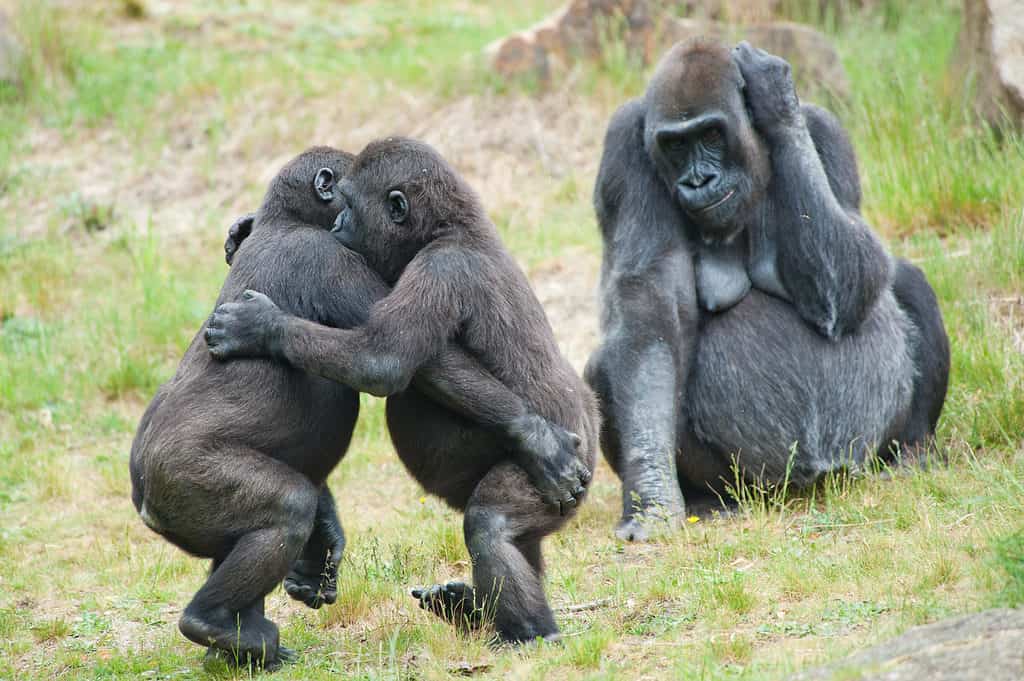
Gorillas help to disseminate seeds to preserve their native ecosystems.
©Eric Gevaert/Shutterstock.com
All the gorillas we’ve examined play a key role in their ecosystems. They also play an important role in the food chain, helping to disseminate seeds and preserve the area’s flora. Losing these gentle giants would upset the ecology and deprive us of one of our largest, strongest, and most stunning primates.
Gorillas have a chance at survival because so many people are interested in them. The number of NGOs, government organizations, and eco-tour businesses focused on gorillas shows how fascinating they are.
The photo featured at the top of this post is © AB Photographie/Shutterstock.com
Thank you for reading! Have some feedback for us? Contact the AZ Animals editorial team.




